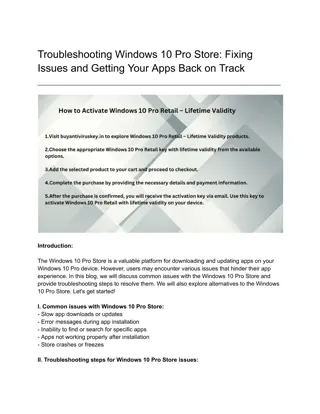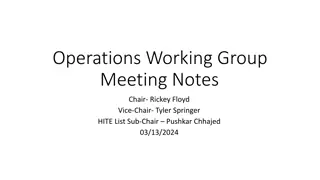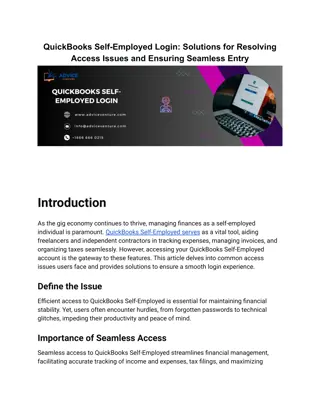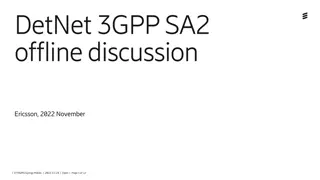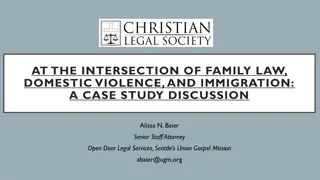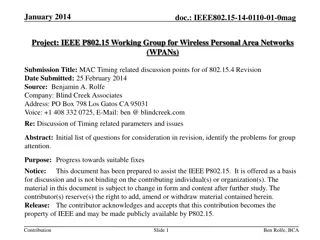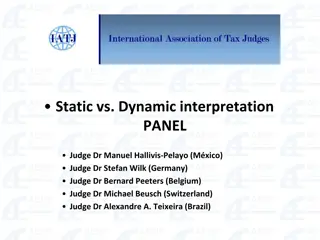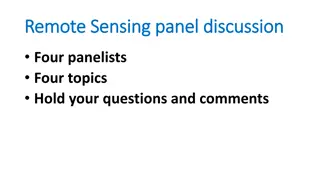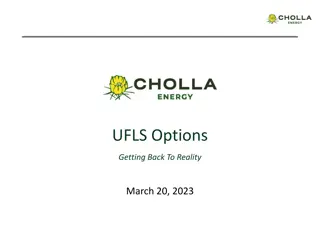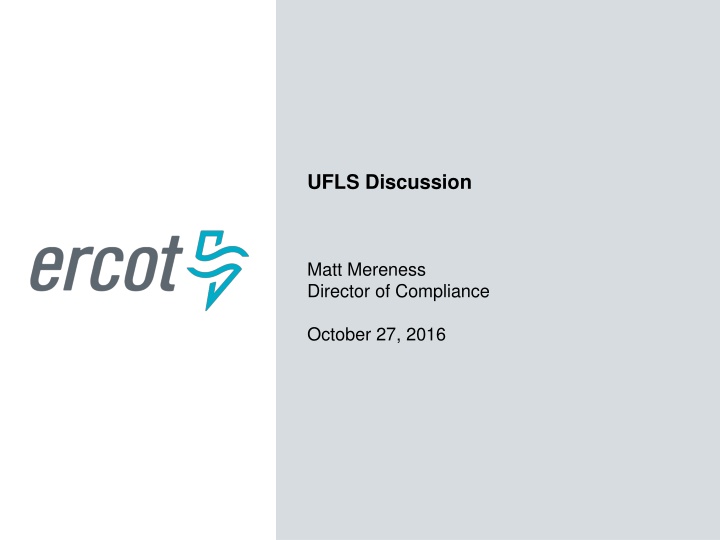
UFLS Compliance in ERCOT - Key Issues and Requirements
Learn about the requirements and current issues surrounding Under-Frequency Load Shedding (UFLS) compliance in ERCOT through discussions with the Director of Compliance. Explore examples of handling load resources, differences between annual and operational surveys, and emerging concerns.
Download Presentation

Please find below an Image/Link to download the presentation.
The content on the website is provided AS IS for your information and personal use only. It may not be sold, licensed, or shared on other websites without obtaining consent from the author. If you encounter any issues during the download, it is possible that the publisher has removed the file from their server.
You are allowed to download the files provided on this website for personal or commercial use, subject to the condition that they are used lawfully. All files are the property of their respective owners.
The content on the website is provided AS IS for your information and personal use only. It may not be sold, licensed, or shared on other websites without obtaining consent from the author.
E N D

